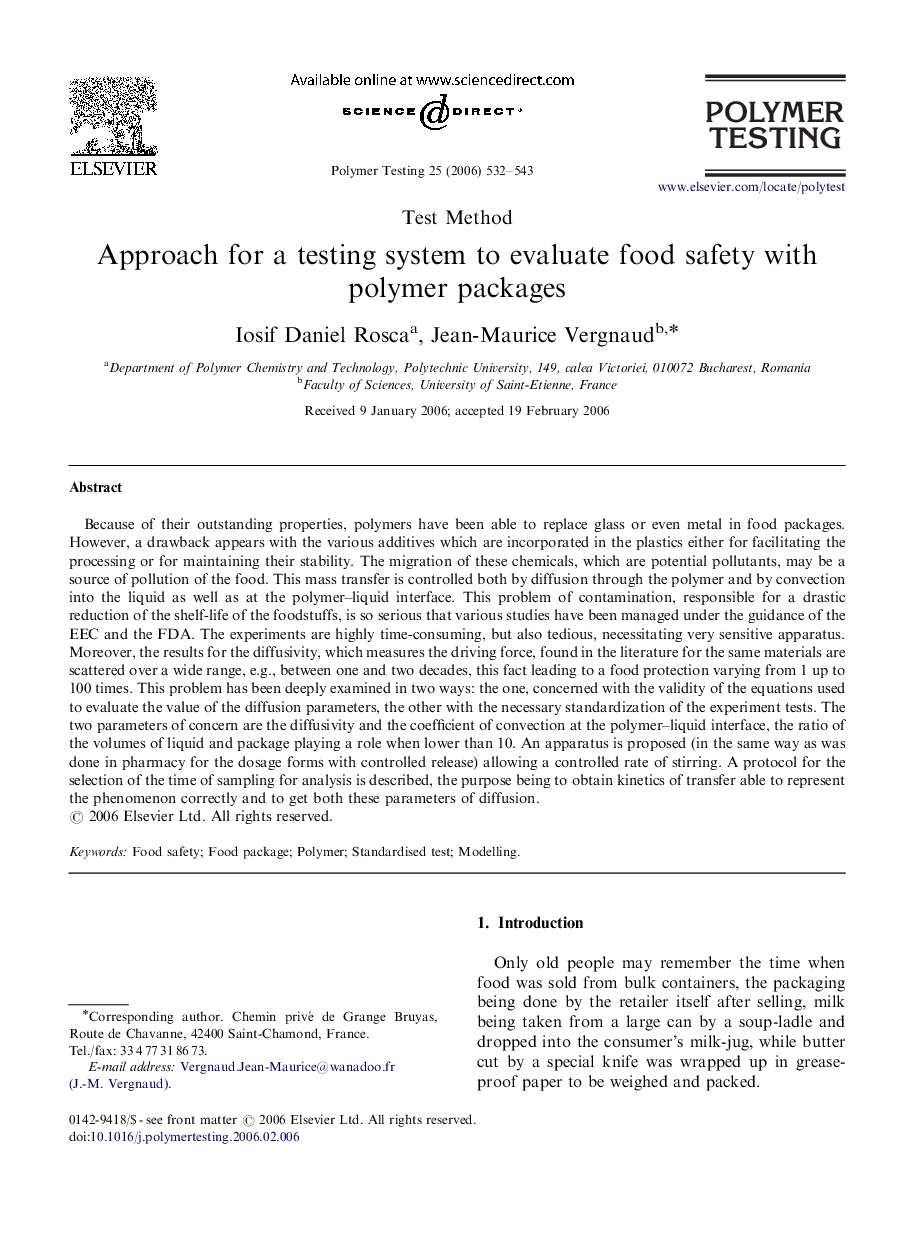| Article ID | Journal | Published Year | Pages | File Type |
|---|---|---|---|---|
| 5207676 | Polymer Testing | 2006 | 12 Pages |
Abstract
Because of their outstanding properties, polymers have been able to replace glass or even metal in food packages. However, a drawback appears with the various additives which are incorporated in the plastics either for facilitating the processing or for maintaining their stability. The migration of these chemicals, which are potential pollutants, may be a source of pollution of the food. This mass transfer is controlled both by diffusion through the polymer and by convection into the liquid as well as at the polymer-liquid interface. This problem of contamination, responsible for a drastic reduction of the shelf-life of the foodstuffs, is so serious that various studies have been managed under the guidance of the EEC and the FDA. The experiments are highly time-consuming, but also tedious, necessitating very sensitive apparatus. Moreover, the results for the diffusivity, which measures the driving force, found in the literature for the same materials are scattered over a wide range, e.g., between one and two decades, this fact leading to a food protection varying from 1 up to 100 times. This problem has been deeply examined in two ways: the one, concerned with the validity of the equations used to evaluate the value of the diffusion parameters, the other with the necessary standardization of the experiment tests. The two parameters of concern are the diffusivity and the coefficient of convection at the polymer-liquid interface, the ratio of the volumes of liquid and package playing a role when lower than 10. An apparatus is proposed (in the same way as was done in pharmacy for the dosage forms with controlled release) allowing a controlled rate of stirring. A protocol for the selection of the time of sampling for analysis is described, the purpose being to obtain kinetics of transfer able to represent the phenomenon correctly and to get both these parameters of diffusion.
Related Topics
Physical Sciences and Engineering
Chemistry
Organic Chemistry
Authors
Iosif Daniel Rosca, Jean-Maurice Vergnaud,
